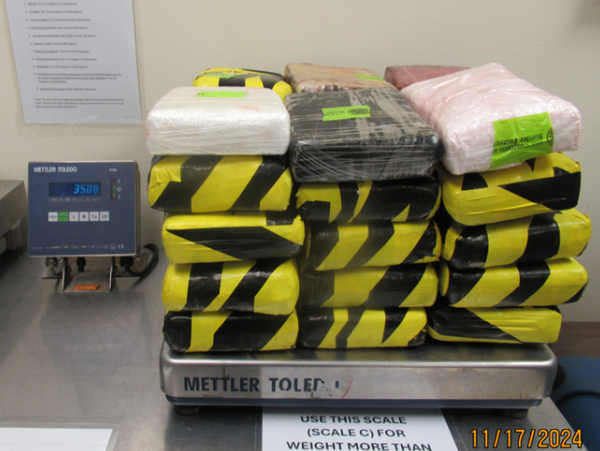Most of what we consume in Canada is neither recycled nor reused.
In 2020, only 6.1 per cent of economic activities in Canada were considered part of the circular economy. This means that the vast majority of the 2.3 gigatonnes of resources consumed that year were lost.
To counter this trend, the circular economy aims to optimize the use of resources at every stage in the life cycle of a good or service.
Cities, as the main sources of resource consumption, waste production and greenhouse gas emissions from transport and buildings, are strategically positioned to reverse this trend. Because they concentrate the majority of the population, infrastructure and economic activities, cities can play a major role in influencing how the flow of materials is managed.
But what is the real power of cities in the circular economy? This is one of the questions I’m exploring as a geographer and professor in the Department of Urban Studies and Tourism at the Université du Québec à Montréal, with the support of the Québec Circular Economy Research Network and the Social Sciences and Humanities Research Council of Canada.
Before answering that question, let’s look at a few facts.
This article is part of our series, ‘Our cities from the past to the future.’ Urban life is going through many transformations, each with cultural, economic, social and political implications. To shed light on these diverse issues, La Conversation Canada and The Conversation Canada are inviting researchers to discuss the current state of our cities.
The circular economy takes root in Canadian cities
Compared to Europe, the involvement of Canadian municipal authorities in putting circular economic activities into action is still in its infancy.
In 2018, the Recycling Council of Alberta launched a pioneering initiative to support four cities — Banff, Edmonton, Calgary and Lethbridge — as well as Strathcona County, in developing a circular economy road map. We’re talking here about the commitment they have shown as advocates, facilitators and catalysts of the circular economy in their areas by using raising awareness raising and embracing regulation and innovation, as well as project financing and support.
Today, more than 30 cities and regions in Canada are at various stages of adopting a circular economy road map. This enthusiasm owes in particular to the Canadian Circular Cities and Regions Initiative launched in 2021 by the National Zero Waste Council, with the Federation of Canadian Municipalities, Recycling Council of Alberta and Recyc-Québec.
À lire aussi : Les municipalités québécoises sont plus actives qu’on ne le pense en matière de développement durable
Among these cities, Montréal recently adopted such a plan, while Sherbrooke and the Communauté métropolitaine de Québec are currently preparing one.
Under-utilized tool for the circular economy
I recently published a study on urban experiments in Canada in the Cambridge Journal of Regions Economy and Society with Chedrak Chembessi, a professor at the University of Ontario’s Economics and Social Innovation research centre.
Among other things, we showed that most road-map projects focus on generic actions such as funding, support, awareness campaigns and cross-sectoral networking. These actions should largely be left to other players who are perfectly capable of carrying them out. I’m thinking in particular of economic development agencies at higher levels of government, chambers of commerce and industry associations.
Cities often prefer these generic actions because they respond to immediate needs expressed by local businesses and sectors that are already proactive. What’s more, the priority areas of the circular economy, such as construction, processing of recyclable materials, textiles and bio-food often exceed the traditional competencies of municipalities. That often leads municipalities to focus on generic actions.
And yet, cities have at least two levers exclusively at their disposal that could play a decisive role: Urban planning, which encompasses practices and policies linked to the development and configuration of urban components; and procurement, which refers to cities using their purchasing power to steer the market towards circular products and services.
À lire aussi : Urban studies: Doing research when every city is different
While municipalities have made a lot of progress in the areas of procurement, they are less committed to urban planning linked to the circular economy. Yet acting on urban components can make a difference by altering the cost-benefit ratio of circularity strategies. That, in turn, would make it easier for social and economic players to prioritize these strategies.
How? By redefining urban planning principles through the prism of the circular economy.
To illustrate, here are three examples of measures that could be considered.
Proximity and accessibility
First, bring urban services related to the circular economy (such as maintenance, repair, donation and resale) closer to neighbourhoods with high concentrations of families, young people, newcomers and seniors, to ensure they are cost-effective.
À lire aussi : Pour préserver la biodiversité, il faut rendre les villes plus compactes, circulaires et vertes
However, in doing so, their location must be planned to facilitate the supply of goods that would otherwise be thrown away. This means innovating in terms of preferential commercial and industrial zoning, because for these services, proximity to consumers is an essential condition, especially in a context of strong competition for affordable commercial space.
Thoughtful functional mix
Secondly, adopt a more targeted practice of functional mixing, like putting various urban functions (housing, light industry, retail, community services, etc.) in the same location in order to intentionally make circular economy practices more viable and profitable.
À lire aussi : La densification des villes est bonne pour l’environnement… et l’économie
For example, jointly planning the development of mixed commercial zones with that of targeted light industrial zones (textiles, for example) would promote the recycling of residues into new products and create economic opportunities.
Similarly, planning the development of major employment hubs in conjunction with affordable housing and public transit networks would reduce transportation costs for potential workers and make it easier to recruit and retain local businesses sensitive to labour shortages.
Economically attractive reuse
Finally, the reuse of existing buildings and infrastructure should become more economically attractive than demolition. Putting new standards in place is not sufficient.
It is also necessary to modernize land use and innovate by encouraging the reuse of materials in municipal equipment and services. This could mean creating dedicated deconstruction facilities and zones, or reconditioning centres strategically located in the city equipped with new logistics services, in order to make reuse a natural option for developers.
Rethinking structure
These are just a few examples, but they show why further research into the potential contribution of urban planning is important to getting the circular economy up and running.
Economic activities and urban structure are intrinsically linked and mutually reinforcing. For circularity to become the norm, it must be structurally advantageous, in terms of cost and convenience, for all social and economic players.
Acting on the components of urban life is indispensable and must be part of the solution. After all, to get to new places, sometimes you need to improve the ship, not just change its direction.
Juste Rajaonson has received funding from the Réseau de recherche en économie circulaire du Québec and the Social Sciences and Humanities Research Council of Canada.
This article was originally published on The Conversation. Read the original article.







